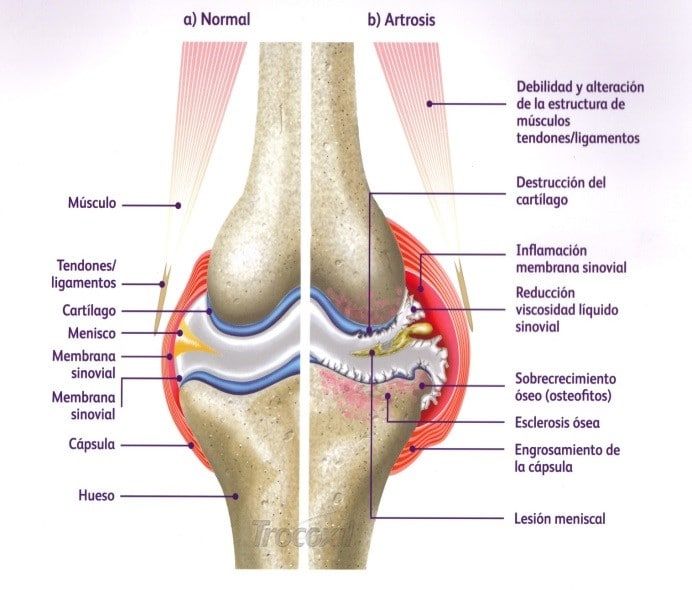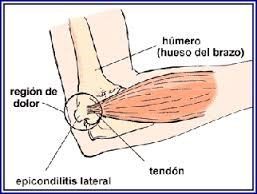MUSCULOSKELETAL SYSTEM
Ankylosing spondylitis
 Ankylosing spondylitis is an immune-mediated inflammatory rheumatic disease that affects movement. It is characterized by ossification and curvature of the spine, although it can also affect joints out of the spine, especially lower extremities and less often internal organs.
Ankylosing spondylitis is an immune-mediated inflammatory rheumatic disease that affects movement. It is characterized by ossification and curvature of the spine, although it can also affect joints out of the spine, especially lower extremities and less often internal organs.
The inflammatory process produces pain, stiffness and restriction of joint function. Severe pain may eventually produce tendon inflammation.
Ankylosing spondylitis is nowadays intractable addressing its causes. Therefore, treatments aiming to inhibit pain and inflammation turn out to be more important. The treatment has to be multidisciplinary, as other treatments apart from the medication therapy are used as well, such as physiotherapy, physical therapy and, in case of necessity, radiotherapy. Whole-body Cryotherapy is today an integral element of the treatment for certain conditions. Its effect is sufficiently proved.
This therapy should be used within the framework of a clinical treatment -inpatient- consisting of 2 sessions per day (or 3 in case of great activity) during 2 to 3 weeks. Medical evaluations about the progress of the treatment should take place every 2-3 days.
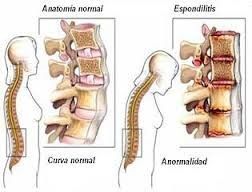 Nevertheless, in outpatient cases, 10-15 sessions of exposure to cold are usually sufficient even when there is a high degree of inflammatory activity. This causes a relief of the symptom picture in terms of pain reduction and movement restrictions. A shock treatment consisting of 5 sessions during the 2 first weeks using a medium intensity Moderate upper area program is recommended to this effect. It will be followed by a maintenance therapy consisting of 2 or 3 sessions per week during 1 or 2 months using the same program. 3 or 4 cycles per year will be planned.
Nevertheless, in outpatient cases, 10-15 sessions of exposure to cold are usually sufficient even when there is a high degree of inflammatory activity. This causes a relief of the symptom picture in terms of pain reduction and movement restrictions. A shock treatment consisting of 5 sessions during the 2 first weeks using a medium intensity Moderate upper area program is recommended to this effect. It will be followed by a maintenance therapy consisting of 2 or 3 sessions per week during 1 or 2 months using the same program. 3 or 4 cycles per year will be planned.
Additionally, Whole-body Cryotherapy is particularly relevant for diseases connected to psoriasis or chronic intestinal inflammation (Crohn’s disease). Both of them are considered as autoimmune diseases.
Arthrosis
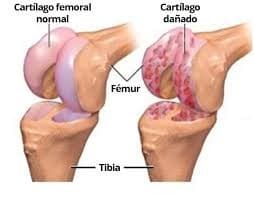 It is a degenerative joint disorder produced by cartilage wear and tear. Arthrosis is the most common rheumatic disease. It causes pain, inflammation and reduction of joint movement.
It is a degenerative joint disorder produced by cartilage wear and tear. Arthrosis is the most common rheumatic disease. It causes pain, inflammation and reduction of joint movement.
Whole-body Cryotherapy can be used in all stages of the disease, but it is preferable to start in the early stage, when the cartilage is still functional.
There are several reasons for its use: arthrosis is a common disease, especially among the elderly. Besides that, there is no possibility of offering a treatment focused on the very cause in these days, so there are studies that try to find efficient symptomatic treatments, and Whole-body Cryotherapy has given good results thanks to its systemic effect. This is important at different levels, since arthrosis does not usually affect just one joint, but several (big and small). This, unlike local therapies, makes Whole-body Cryotherapy advantageous because it works simultaneously on all the spots and joints affected.
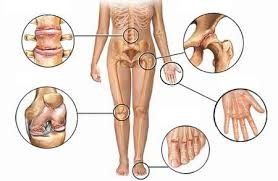 Moreover, thanks to its effects, other clinical aspects related to emotional factors, among others, are also improved. Another reason supporting its use is the fact that its therapeutic effect, in relation to pain and inflammation, often lasts several months or even longer.
Moreover, thanks to its effects, other clinical aspects related to emotional factors, among others, are also improved. Another reason supporting its use is the fact that its therapeutic effect, in relation to pain and inflammation, often lasts several months or even longer.
Arthrosis develops directly in the joint cartilage, where micro-fissures enlarge gradually. The cartilage scrapes and produces waste that moves freely through the joint. Plus, some tissue structures and small pieces of cartilage may be detached or pulled out. The cells in the damaged cartilage tissue release inflammatory substances, and the inner membrane of the capsule gets inflamed. This means that the cartilage will not stop suffering damage.
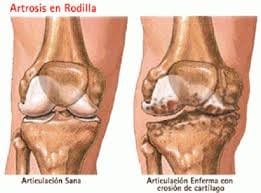 This wear and tear is favored by several factors: less stretch and less water content in the cartilage, thinning tissue and limitations in nutrient supply and waste disposal. These factors come with aging and decrease the capacity of cushioning. Too much weight is also especially negative for joints like hip joint and knee joint. This increases pressure on cartilage and affects their functionality.
This wear and tear is favored by several factors: less stretch and less water content in the cartilage, thinning tissue and limitations in nutrient supply and waste disposal. These factors come with aging and decrease the capacity of cushioning. Too much weight is also especially negative for joints like hip joint and knee joint. This increases pressure on cartilage and affects their functionality.
 Since joint tissue does not have its own blood supply, nutrients and oxygen are transmitted through synovial fluid coming from the inner membrane of the joint capsule. This requires an optimal pressure index on the cartilage, meaning that a permanent disorder at this level leads to a chronic lack of supply to the tissue.
Since joint tissue does not have its own blood supply, nutrients and oxygen are transmitted through synovial fluid coming from the inner membrane of the joint capsule. This requires an optimal pressure index on the cartilage, meaning that a permanent disorder at this level leads to a chronic lack of supply to the tissue.
Nevertheless, other factors that facilitate the disease to a large extent are hormonal influences (post-menopause arthrosis of the hands) or partial and chronic deterioration of the joint functions due to bad posture, repetitive efforts and insufficient joint movement.
In an advanced stage, the joint becomes significantly swollen and warm, especially if the arthrosis has been activated by inflammatory processes.
The development of arthrosis is often accompanied by severe pain caused by:
● Increase of pressure on the joint surface of the bone affected.
● Inflammation of the inner membrane of the joint capsule.
● Expansion of the joint capsule as a consequence of the joint effusion.
● Chronic irritation of the peri-articular tissue structures, ligaments, tendons and muscles.
The pain mainly appears during and after exercise and is relieved with rest and at night. However, pain during rest will appear later leading to greater movement limitations.
Arthrosis is hardly ever self-healed. Nevertheless, a repairing process of connective tissue can be activated in the final stage of the disease as a result of chronic inflammation and damage of bones. This process leads to a partial substitution of the lost cartilage, a reduction in symptoms and a better functionality.
Many of the problems associated with arthrosis are due to the fact that this disease affects the muscles and the connective tissue. This is why the response to pain in damaged joints results not only in changes in proprioception in the joints, but also in the peri-articular tendons and muscle groups. However, a normal nerve transmission from these areas is essential for the proper functioning of muscle contractions and the adequate maintenance of the sense of balance. As a result of the modified afferent impulses, there can be coordination disorders and instability when walking.
Whole-body Cryotherapy has an impact on the main components of the disease:
● Onset of pain.
● Inflammatory process.
● Functional alteration of muscle groups near joints.
Although the pain caused by arthrosis depends on different harmful factors, whole- body cold sessions allow to reduce pain significantly and to counter joint blockade. This procedure enhances the conditions to use other techniques such as passive and active kinesiotherapy. The patient should try to avoid too much tension and pressure when doing exercise after pain is gone relatively fast. The therapist should help find a reasonable level of activity in order to improve the nutrient supply to the cartilage through the normalization of the pressure in the joint. Plus, a wider movement stimulates the substance supply to the cartilage cells.
As it happens with the pressure level, a certain degree of viscosity of the synovial fluid is necessary to maintain the metabolic balance of the joint cartilage.
In this regard, Whole-body Cryotherapy has an advantage over standard local cold applications. It is a brief therapy that reaches the deepest layers of tissue and inner space of the joint for a short time in order to avoid negative effects on the flow properties of the synovial fluid.
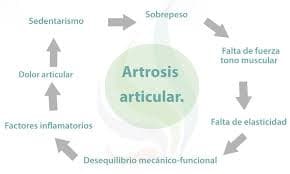 Cold applied throughout the body effectively reduces not only pain, but also the increasing temperature in the area, as well as the swelling. This means that the inflammatory process is completely considered from a therapeutic point of view.
Cold applied throughout the body effectively reduces not only pain, but also the increasing temperature in the area, as well as the swelling. This means that the inflammatory process is completely considered from a therapeutic point of view.
Whole-body Cryotherapy does not fully replace other demonstrated treatments for arthrosis. It must be part of a multidisciplinary therapeutic concept including medicine intake, kinesiotherapy right after the cold sessions, muscle relaxation techniques and surgical treatment.
Besides that, it is possible to discuss with the doctor whether a -temporary- reduction or suspension of the medicine treatment can take place if the results of cryotherapy are satisfactory.
Central cord syndrome
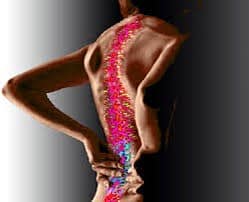 Whole-body Cryotherapy is also indicated for central cord syndromes, especially for the cervical and lumbar spine. These syndromes are part of our everyday life under designations like “disc injury”, “low back pain” or “sciatic pain”.
Whole-body Cryotherapy is also indicated for central cord syndromes, especially for the cervical and lumbar spine. These syndromes are part of our everyday life under designations like “disc injury”, “low back pain” or “sciatic pain”.
 These disorders usually called “back pain” are caused by degenerative changes of the intervertebral discs and the zygapophysial joints. However, the muscles and ligaments that support and fix the spine can also be affected both somatically and functionally. Inflammatory processes can be found parallel with the degenerative changes at their onset.
These disorders usually called “back pain” are caused by degenerative changes of the intervertebral discs and the zygapophysial joints. However, the muscles and ligaments that support and fix the spine can also be affected both somatically and functionally. Inflammatory processes can be found parallel with the degenerative changes at their onset.
Back pain has a strong tendency to become a chronic disorder and leads to physical inactivity, locomotive system stress and depressive-reactive clinical pictures.
A cold treatment can complete and even replace other standard therapies. Muscle tension decreases when nociceptive impulses are reduced. When cryotherapy is used in time and in combination with behavioral interventions, it is possible to effectively stop this disorder before it becomes chronic. Besides, when there is pain after a surgical intervention of the spine, the results of using Whole-body Cryotherapy are really compelling.
It is usually recommended to apply a series of up to 20 cold sessions to treat central cord syndromes in order to reduce the painful muscle tension. The treatment will consist of 3 sessions per week, alternating days, during 7 consecutive weeks using the Moderate upper area program. This regime is to be retaken 3 to 4 times per year.
Tendinopathy
Tendinopathies are degenerative diseases of the connective tissue of tendons (tennis elbow, Achilles tendonitis, heel pain). Their inflammatory symptoms are pain, loss of strength and dysfunction, haematoma or pain when contracting and stretching. They are favoured by a chronic overload, and usually respond quite well to Whole-body Cryotherapy.
Pain when moving is related to these disorders. It is sometimes very severe, and is relieved after 5 to 10 sessions. However, early efforts are to be avoided, and the return to normal habits must be gradual.


